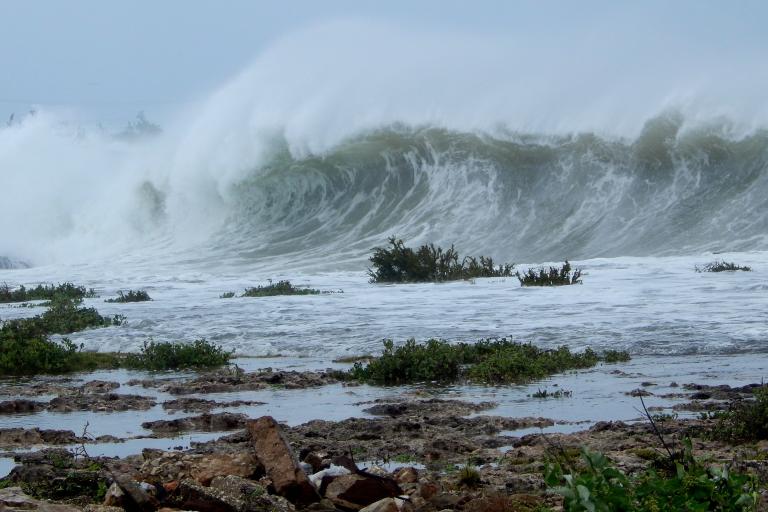WMO issues guidelines on coastal flooding early warning systems

New WMO Guidelines on the Implementation of a Coastal Inundation Forecasting Early Warning System offer solid and practical advice for countries, donors and experts seeking to set up early warning systems against an increasing hazard.
The guidelines are a contribution to the UN Early Warnings for All initiative and reflect the high priority needs of small island developing States (SIDS) and Least Developed Countries that are particularly vulnerable to these coastal hazards.
“The severity of the impacts of disasters, especially on coastal communities, is well known and documented. A contributing factor is the increasing intensity and frequency of meteorological and oceanographical hazards caused by climate change, including sea-level rise, which can seriously affect SIDS and other coastal nations,” state the guidelines.
“It is critical to recognize that coastal inundation can result from single or multiple hazards, and that it is being exacerbated by the impacts of climate change, especially associated with sea-level rise."
“Coastal inundation events are an increasing threat to the lives and livelihoods of people living in low-lying, populated coastal areas. Furthermore, the issues for most countries that have vulnerable coastlines are the increasing level of development for fishing, tourism and infrastructure, and the sustainability of their communities,” it says.
The new guidelines were presented during a side event during WMO’s Commission for Weather, Climate, Water and Related Environmental Services and Applications (SERCOM), attended by more than 140 participants from all over the globe, including the South Pacific, the Caribbean, and Africa.
WMO is grateful to the Climate Risk and Early Warning Systems Initiative and the Korean Meteorological Administration for financial support.
These guidelines are based on the successful implementation of demonstration systems in four countries between 2009 and 2019 through the Coastal Inundation Forecasting Demonstration Project, which included a special focus on Pacific islands. They also incorporate key principles of WMO's Flash Flood Guidance System (FFGS) and the Severe Weather Forecast Programme.
The aim is to be a “one-stop” shop that countries can follow to prepare and implement their own coastal inundation forecasting early warning system. It provides a straightforward 10 step process with templates featuring policy, management and technical processes that countries or regions can use to build their own early warning system, from vision through to “go-live” implementation. As such information is not always readily available in many countries, these guidelines have concentrated on these features in developing and building a system, including necessary information for sponsors and advice on the resources necessary for success.
The Guidelines are also a registered activity of the United Nations Decade of Ocean Science for Sustainable Development.










